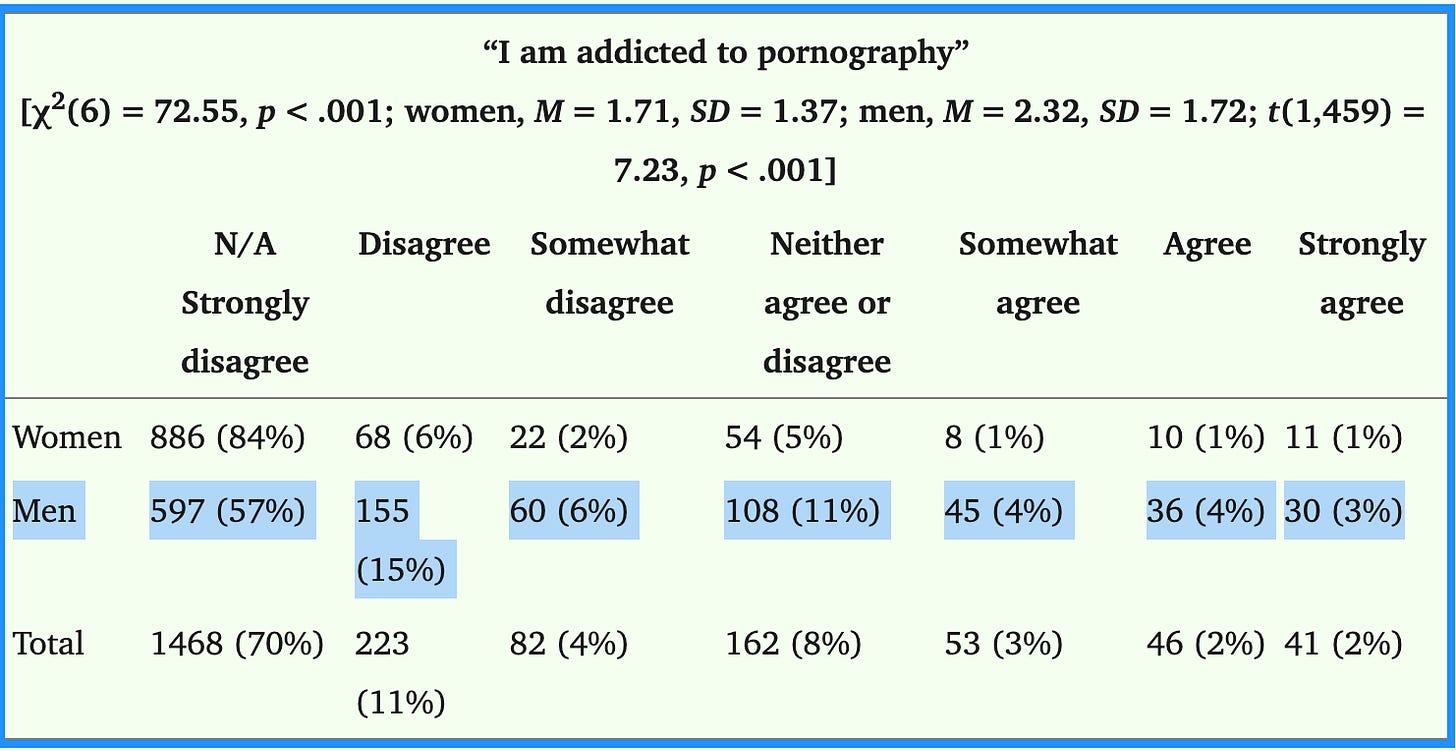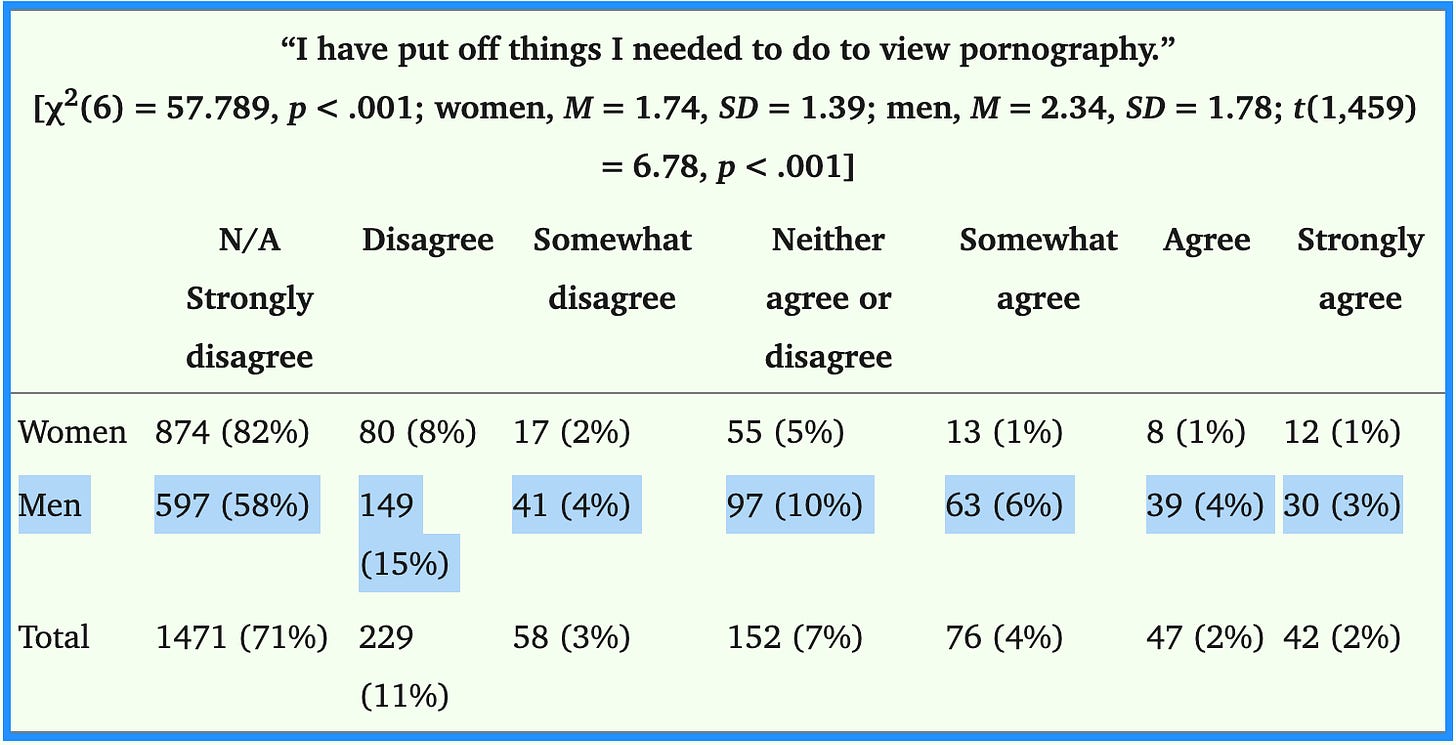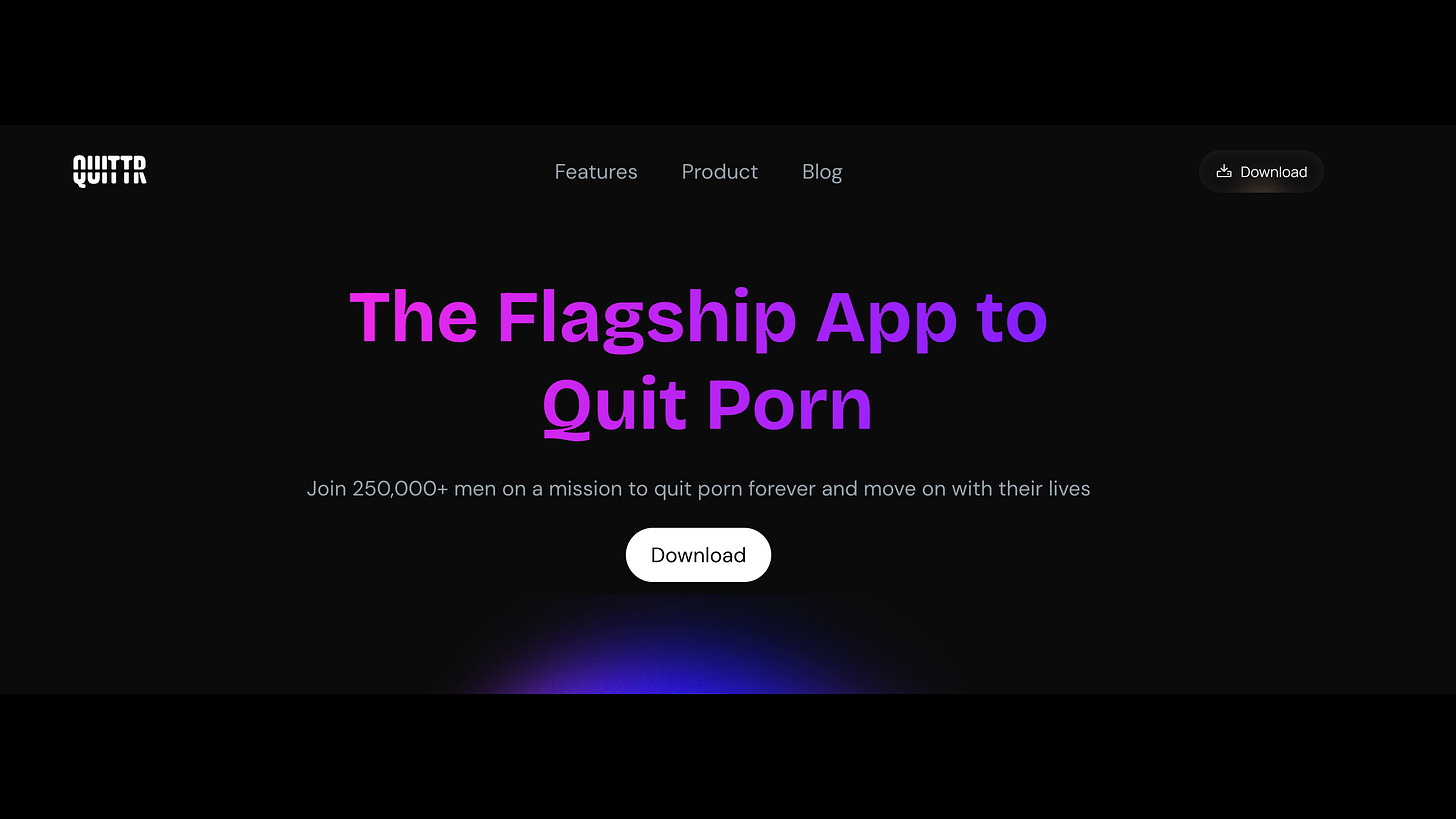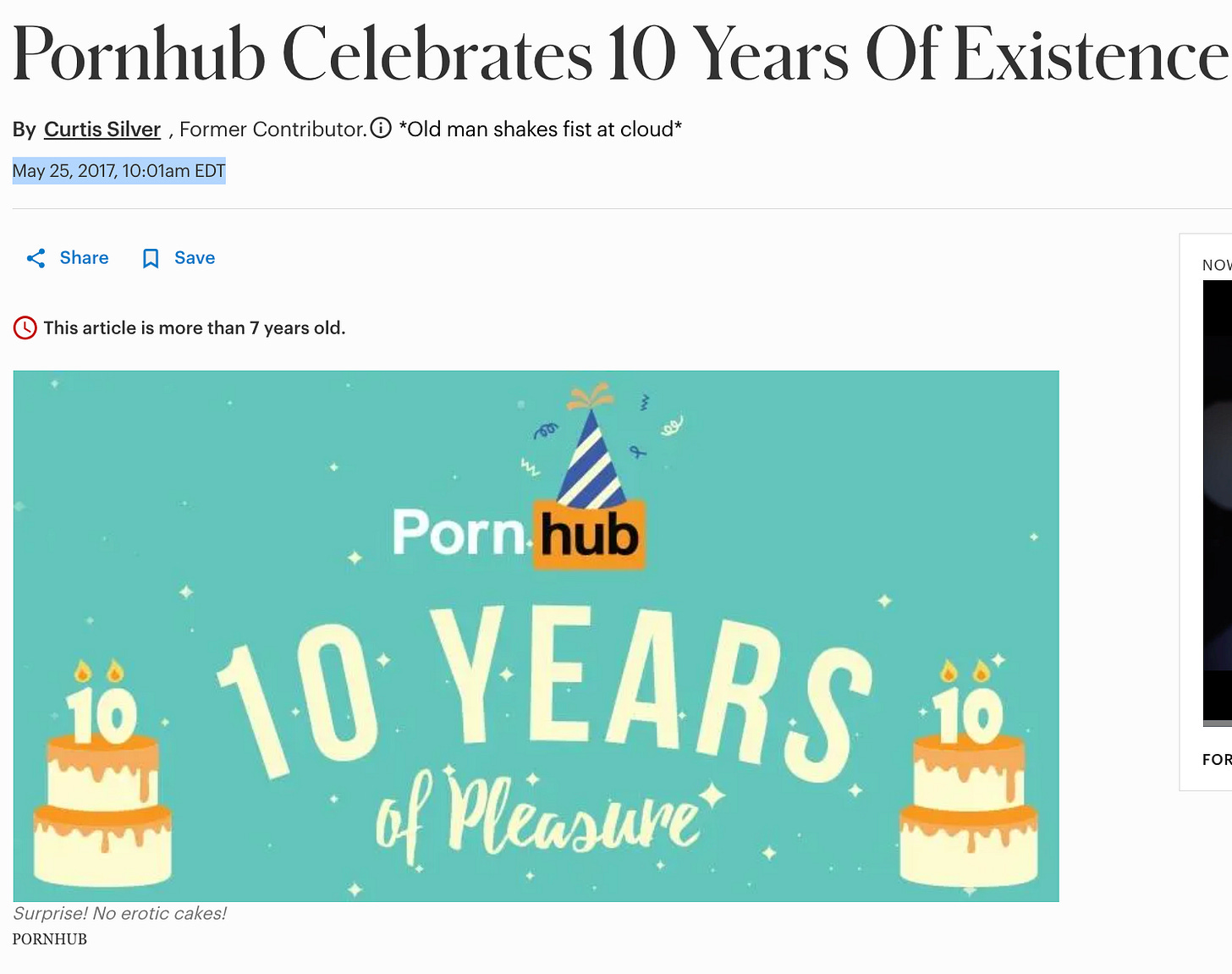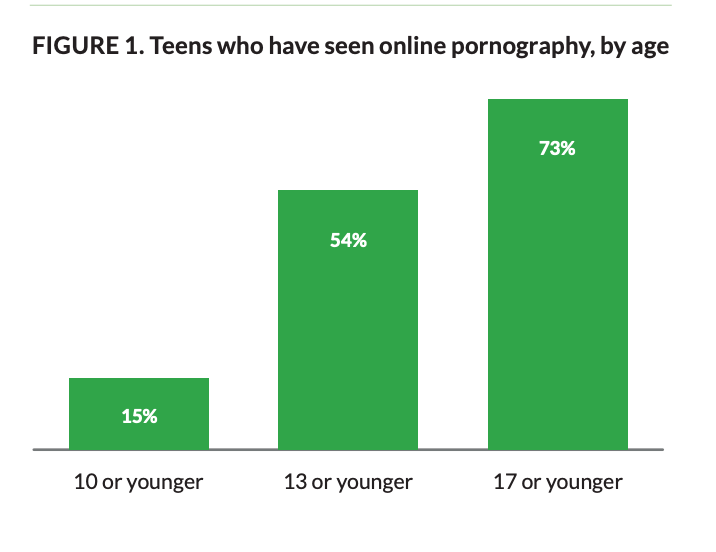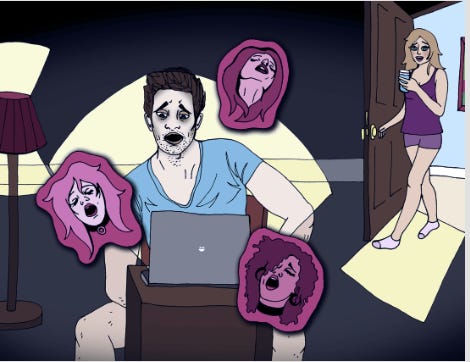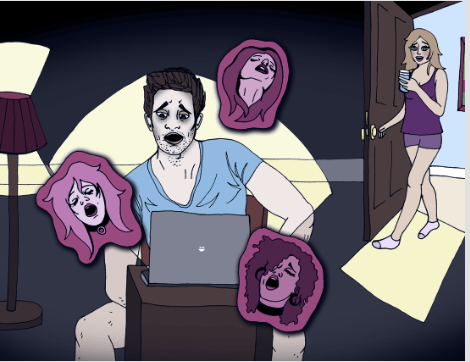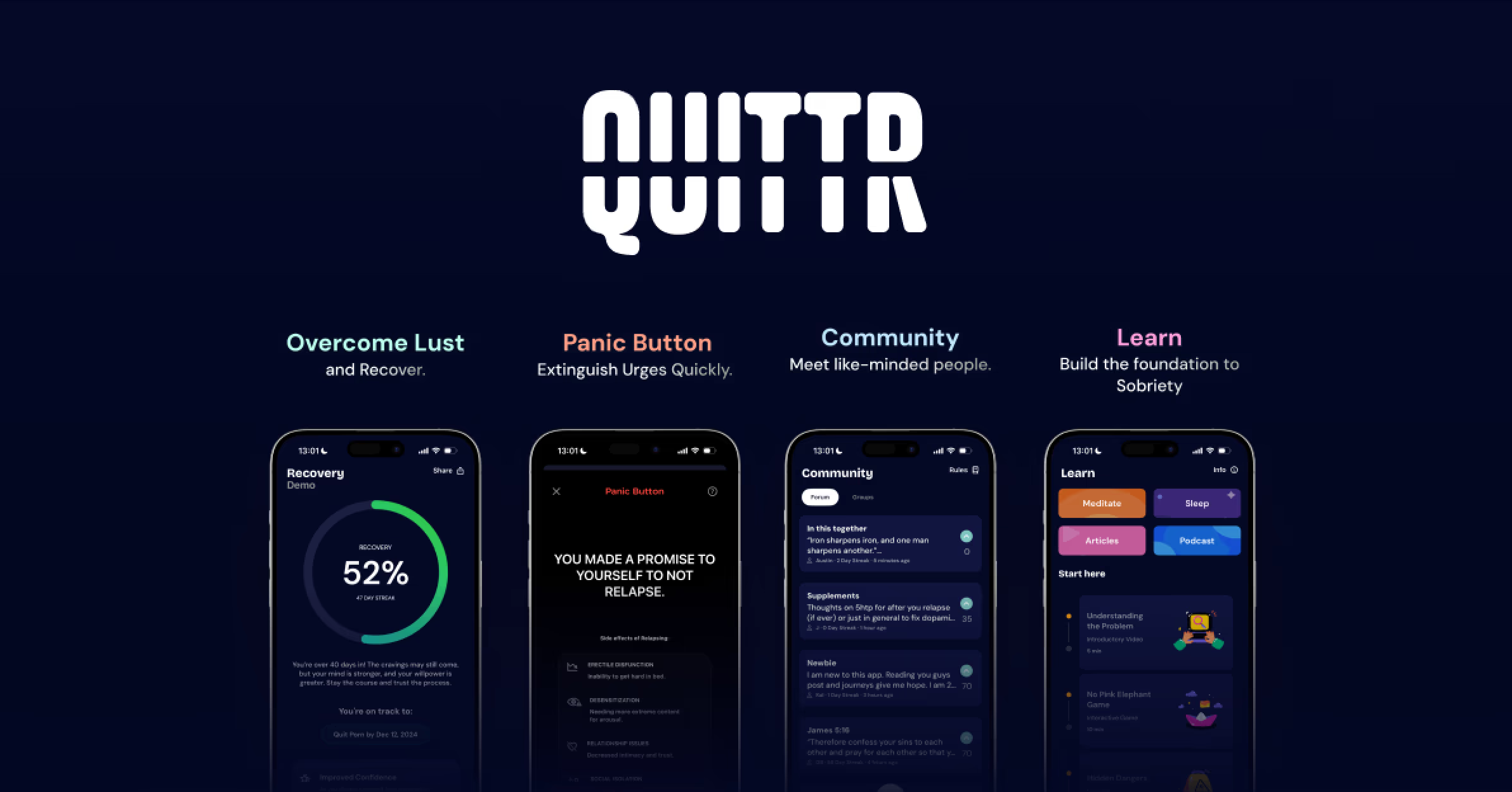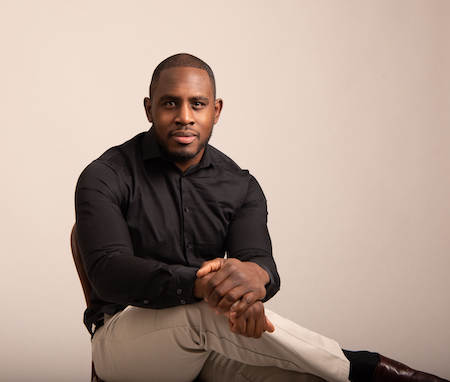During the pandemic, I ran a few cohorts to help men kick their porn addiction. Much the way I had kicked my drinking habit (link to those videos in the description), I had successfully kicked the porn habit, some of my most popular articles were about kicking porn, and I genuinely enjoy coaching and teaching.
I was as big of a porn addict as you can be. The crazy thing is that I didn’t really have a problem getting laid. Back when I was younger, better looking, had more hair, and was knocking cats every weekend in my amateur boxing career, I had no shortage of girls. I’m not gonna say they were throwing themselves at me because that definitely wasn’t true—most of the time—but I was not the lonely, overweight, socially awkward image most people have of a guy who’s hooked on watching other people have sex.
In fact, to put this into perspective, there were multiple times I beat myself into ED, couldn’t perform when a girl came over, and they still gave me a chance again. Of course, I blew that chance too because I was hooked on porn—but so are a lot of men. Many more than I suspected because it’s been over 4 years since I ran the last cohort, and I’m STILL amazed at how many guys signed up.
And just how many men are we talking about are addicted to porn? We’ll get to that—and to avoid repetition, any study or figures I cite have the links in the description—but first, let’s define “porn addiction” because there’s a fuzzy but not non-existent line between a guy who occasionally watches a clip when his wife and kids are visiting family out of town and a dude who knows the names of both male and female pornstars and—despite the hundreds of years worth of free pornographic material on the internet—pays for a subscription or two to his favorite site.
We’ll dig a little deeper into that distinction later in the video, but for now, let’s talk about the naughtier side of that line. What makes someone a pornography addict?
You don’t have to risk dirtying up your browser history to find the answer. I did it for you. And what I found was…unsatisfactory.
There are a lot of signs of porn addiction, but most resources didn’t have a clear-cut definition and the ones that did were not all in agreement. I imagine this is because of that fuzzy but real line between an occasional viewer and a guy who gets fired from his job for showing up late too many times because his “jerk before work” took longer than expected because he had to find the perfect clip.
So, rather than list all the signs of porn addiction, I’ll just tell you that a porn addict is someone who’s porn use has a negative impact on their life. What does this “negative impact” look like? It might be relationship problems, sexual dysfunction, wasting hours of time, social isolation, or even financial issues.
And, as much as I want that definition to be subjective and personal, it’s like any other addiction. No matter how genetically or psychologically predisposed you are to addiction, no one starts out addicted to anything. And—until relatively recently, with the fentanyl epidemic—rarely does anyone’s first few times cost them everything.
It all starts as fun and games—until it’s not.
I’m not saying that being a porn addict is the same as being a cokehead. I’m just pointing out that no one ever snorted coke planning to become a cokehead, despite everything we know about coke. They were likely just looking for a good time to cope with some bad times, and eventually, the cost of those good times far exceeded their value and just brought with them way worse of a time than what they were originally trying to escape from.
So now that we’ve got the idea of a porn addict down, how many guys are addicted to porn? In a 2019 self-reported study of 579 American men between the ages of 18-30, the question “I am addicted to pornography” received “strongly agree,” “agree,” or “somewhat agree” responses from 11% of men. However, an additional 11% of men responded, “Neither agree nor disagree.”
If you aren’t sure you’re an addict, you’re an addict. So that’s 22% of men—more than 1 in 5—who SELF-REPORT as addicts.
And it gets worse.
The same survey asked, “I have put off things I needed to do to view pornography.” A total of 13% said “strongly agree,” “agree,” or “somewhat agree,” and an additional 10% were “neither agree nor disagree.” If you’re putting off stuff you need to do to watch porn, you’re an addict (source).
And these were self-reported numbers, so the actual number is likely higher. Based on my experience working with these men and examining additional surveys on pornography consumption patterns, I believe somewhere around 30-35% of men have problematic relationships with pornography that are negatively impacting their lives in significant ways. That realization is what led many men to my cohort, brilliantly named “The Dick Detox.”
This essay will cover what I learned about pornography addiction from helping those 500 men, why porn addiction is so difficult to beat, and ultimately why I decided to no longer run the cohorts despite it being an emotionally satisfying and relatively lucrative business model. You’ll also learn why I’m terrified for the next generation of men.
But first, a valuable message from today’s sponsor…
Why it’s so hard to quit internet porn
The hardest part about trying to quit internet porn is that you can’t avoid the place where it’s served: the internet.
If you’re trying to quit drinking, you can stay out of the bar and not hang around people drinking. If you’re trying to quit smoking, you stop buying cigarettes. If you’re a crackhead, stop hanging around the traphouse. While you need more than abstinence and willpower to kick a bad habit, changing your environment goes a long way in helping you to get your life back.
But it’s 2025. You can’t just stop using your computer, smartphone, or the internet. But you can do the next best thing: Use today’s sponsor, Quittr
Quittr is the flagship app explicitly designed to help you break free from porn addiction, trusted by over 250,000 men who are taking back control of their lives. Quittr’s comprehensive approach makes it different, as it tackles the problem from every angle.
When urges hit hard, Quittr’s emergency Panic Button gives you immediate tools to overcome those critical moments of temptation. Their advanced content blocker works across platforms to keep triggering material out of sight and mind.
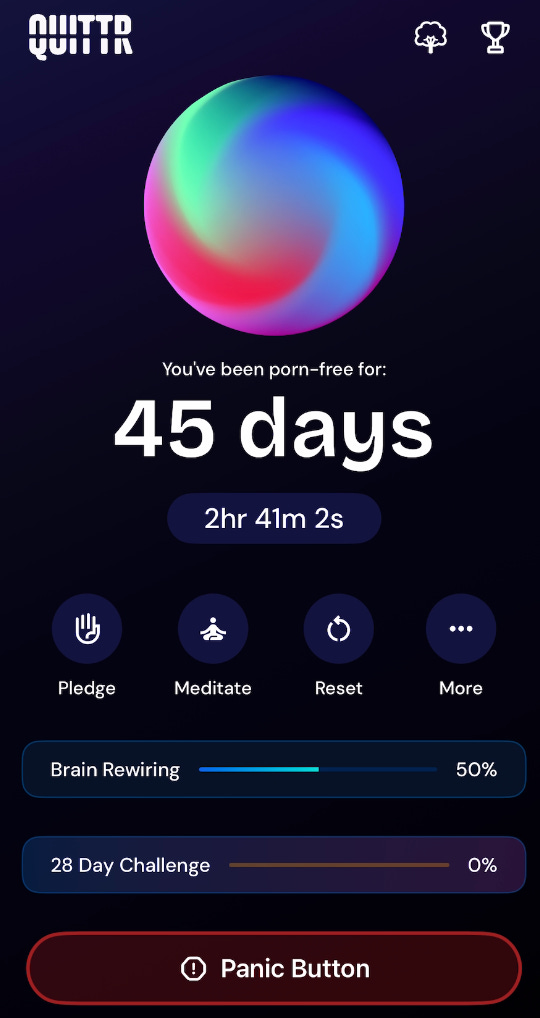 But Quittr knows that blocking content is just one piece of the puzzle. That’s why they provide personalized recovery plans tailored to your specific habits and challenges. Track your progress with their intuitive dashboard that shows your streak, offers detailed analytics, and includes meditation resources to build mindfulness.
But Quittr knows that blocking content is just one piece of the puzzle. That’s why they provide personalized recovery plans tailored to your specific habits and challenges. Track your progress with their intuitive dashboard that shows your streak, offers detailed analytics, and includes meditation resources to build mindfulness.
Feeling alone in your struggle? Connect with Quittr’s supportive community through forums and private group chats filled with others on the same journey. And when you need guidance at 3 AM, their AI therapist, Melius, is available 24/7 to provide personalized support when you need it most.
Users report dramatic improvements not just in breaking the addiction cycle but in their overall mental health, focus, and quality of life. Quittr understands recovery isn’t always linear, so they’ve built features to help you learn from setbacks and maintain motivation throughout your journey.
Take the first step toward a more fulfilling life today with Quittr. Download the app here, or visit their website for more info. Use download code “ED.”
Anyone Can Get hooked On Internet Porn
So let’s start with something that isn’t so surprising but has profound implications that I don’t think many people consider when discussing this topic. Men of all ages and stations in life are addicted to porn.
Between my group cohorts and private coaching, there were guys as young as 18 (the youngest age I’d let anyone join) to guys in their 60s. There were single guys, married guys with kids, and even guys who—much like in the case of my addiction—had no trouble meeting women.
A lot of these guys were exactly what you imagine when you think of a porn addict, but many of them were not. Also, and keep this in mind for a later point in the essay, there were Christians, Muslims, Jews, Hindus, and Sikhs in the group at different times. No one’s moral or ethical system grants them immunity to internet porn addiction, but internet porn addiction is not like other addictions.
I’ve been precise in my description of the problem—calling it “internet porn addiction” compared to just “porn addiction”—because the adjective “internet” makes all the difference. Here’s what I mean.
As of this recording, I’m 40 years old, so I spent my teenage and young adult years in the ’90s and early 2000s—or, as I like to refer to them when talking to anyone born after 9/11, “the before times.”
When I was born in 1985, we didn’t have commercially available internet. Then, there was the internet that you could only use if no one else was on the phone. The next step was DSL, which was way faster and let you use the internet, but it was slow as hell compared to today’s internet. None of this technology would even become wireless until 2003, the year I graduated high school.
Even once it became wireless, cellphone technology was still in its infancy—only a few people had them, and none were smartphones because the first iPhone wasn’t released until 2007. It’s no coincidence that Pornhub was launched that same year.
The Critical Impact of Early Exposure
A 2022 report by Common Sense Media found that the average age a person first views porn is 12, with 15% of them reporting seeing it under the age of 10 (source). Now, I’m not saying that 12-year-olds weren’t looking at porn in 1997—the year I turned 12. But I’m absolutely saying that fewer were, if for no other reason than it was prohibitively difficult to acquire.
Back in my day, if you wanted to watch porn, it was hard to get and even harder to hide. You had to visit a shady adult entertainment store in a seedy part of town.
Not only did you have to visit a store, but you also had to keep your magazines, VHS tapes, and DVDs somewhere. The VHS tapes came in big, gaudy, explicit, colorful boxes that were unnecessarily oversized and drew the eye to them, even without a picture of a girl getting railed on the front.
DVD cases were sized like regular DVDs, but they, too, had that attractively lewd color palette. Most guys my age got their first exposure to pornography by finding a relative’s collection of VHS tapes and DVDs. a.k.a. their “porno stash” and so there wasn’t easy, 24/7 access that you could discreetly carry with you everywhere you went.
This is a big deal because of the critical timing of this exposure. Adolescence is one of the most active and formative periods of brain development. As Dr. Donald Hilton, a neurosurgeon who has studied this topic for decades, explains, “When you learn something at this age, it leaves an impression that sticks.”
The adolescent brain is highly impressionable - it’s establishing the foundation of neural pathways that will influence development for the rest of their lives. And what’s happening?
Today’s 12-year-olds aren’t just stumbling across the occasional nude magazine like we might have in the ‘90s. They’re being exposed to unlimited, high-definition, streaming hardcore pornography that’s more accessible than ever before.
The the more a more indepth plan with actionable steps that will absolutely get you off porn, you check out my flagship guide “The Dick Detox.” It covers these steps and many more that I used to kick porn that I’d taught to hundreds of men.
The New Reality of Porn Addiction
So when I talk about internet porn addiction being different from anything we’ve seen before, this is what I mean. An entire generation is exposed to this content at exactly the age when their brains are most vulnerable to its effects. This isn’t just about bad habits - it’s about fundamental changes to brain development that can alter the course of a person’s life, and it’s had some interestingly unexpected consequences.
Gen-Z (people born after 1997) are having less sex compared to millennials and Gen X (source). They’re having about the same amount of sex as boomers. It makes sense for older people to be getting down less for a variety of reasons beyond the scope of this video, but it’s cause for alarm when the people who are the most attractive and full of hormones are doing it as much as people who are post-menopausal and have an average testosterone level of 200 ng/dl.
Suspend any judgment about this fact and consider what this means. Consensual sex, typically, though not always, is part of a relationship. Maybe not a formal one, but some familiarity is required, and a guy has to risk rejection. But why go through all of that when you can load up your favorite free streaming porn site?
It’s not the real thing, but it’s close enough. The following is just speculation on my part, but it’s the natural conclusion of my point: the lower birth rate problem that all of the developed world is facing right now is at least partly driven by the widespread use of internet pornography, and this trend will only get worse.
The Digital Crack Epidemic of Internet Porn
The internet did to pornography in the 2000s what baking soda did to cocaine in the 80s. It allowed the same product to be sold at lower prices, with greater profit margins, to a larger audience with much greater addictive potential. Unlike crack, pornography that doesn’t involve minors isn’t illegal, and you can do it in secret.
If you want to smoke or drink, you can do it alone, but most people do these things socially until they become addicted. And even then, the guise of socialization provides a high level of plausible deniability. You’re not an alcoholic as long as you get blackout drunk with the homies, but the moment you have a few beers to unwind alone after work, people start asking questions and looking at you sideways.
Porn, on the other hand, is a solitary habit. Unless you’re into some freaky stuff, you’re watching porn alone. You’re waiting until the kids are out of the house, or, if you’re like some of the dudes I worked with, you’re locking your office door and hoping your wife doesn’t figure out how to get in.
Guys watch porn because it’s life on easy mode
Ultimately, the most common root cause I found in working with guys was that porn was just easier. For young guys, porn was easier than working on themselves to pass the attractiveness standards of a non-repulsive woman, approaching said a woman to try and initiate some type of relationship, and dealing with the emotional sting of rejection if they failed.
For guys in relationships, porn was easier than forming a solid connection with their wife and confidently expressing their desires. Or, in some cases, having difficult conversations about mutual physical attraction and making an effort to be sexually enticing to each other.
And they are right—it is absolutely easier to watch porn than to have that conversation. Still, a MUCH harder conversation to have is one in divorce and family court because a combination of not being intimate and discovering that you’re retreating to internet porn instead will feel like cheating. Many women will respond how you’d expect.
Now, I don’t want anyone to take this as blaming some married guy’s porn addiction on his wife, but at the same time, let’s not pretend that sexual desire for the person you’re with isn’t important. While logically, watching porn is better than getting a side piece you’re attracted to, emotionally many women not only view it as the same, but it carries a lot of other stigmas that make a guy look even worse.
I once did a consultation with a woman who found her husband was doing the “lock myself in the office and watch porn” thing and her biggest worry was if her husband looked at her teenage daughter and her friends like that. It was easy enough to reassure her that he wasn’t looking at their daughter that way, but it was a much tougher leap of logic—one that I most likely didn’t make—to convince her that he wasn’t looking at her friends that way.
You can argue about the rationality or correctness of her feelings all you want. It still didn’t change how she now looked at her husband. I don’t know what she did, but she was frantic enough to pay my consultation fee and was genuinely distraught. Either way—whether through prevention or elimination—internet porn severely interferes with the intimate relationships we try to form.
What Actually Worked: The Power of Connection
It turns out that focusing on relationships of all varieties—not just romantic—led to the most success for guys in the group. But what did this look like in practice?
Relationships worked in two ways:
First, I intentionally structured the group to use accountability boards and a group chat. In the same way that groups like Alcoholics Anonymous and Narcotics Anonymous use sponsors and group sharing to help people stay clean, this was the idea here.
I set up a system where guys would check in daily, noting their triggers, successes, and failures without judgment. For some, this meant installing software that tracked their online activity and sent reports to their accountability partners.
However, what started as structured accountability blossomed into guys making genuine friendships and meeting up if they lived nearby. This struck right into the heart of internet porn’s greatest weapon: secrecy. Everyone in the group knew everyone else was dealing with porn addiction, so guys were much more willing to talk about it, connect, and they genuinely wanted to help themselves and others.
For the married men in our group, recovery involved specific strategies for rebuilding intimacy with their partners. This included dedicated date nights, communication exercises, and in some cases, couples therapy. These men had the additional challenge of rebuilding trust if their partners had discovered their habit.
For single men, we focused on building confidence in social situations and creating meaningful connections with potential partners. This didn’t mean they needed to start having sex immediately, but rather learn to form authentic connections rather than retreat to the artificial stimulation of pornography.
For both groups, we implemented practical tools beyond just connection:
- Trigger identification and management - Learning to recognize and avoid situations that typically led to porn use
- Habit replacement - Substituting porn use with healthier activities that provided similar dopamine releases
- Scheduled check-ins - Regular accountability with partners at times when urges were strongest
- Environmental changes - Modifications like keeping devices in public spaces and installing filtering software
- Mindfulness practices - Techniques to observe urges without acting on them
The American Psychological Association has consistently found that group therapy approaches for behavioral addictions outperform individual therapy alone. For pornography specifically, a 2022 study in the Journal of Behavioral Addictions reported that men in group recovery settings had nearly twice the success rate of those using only self-help techniques or software solutions.
This is why the accountability partnerships in our group worked so well. Neuroscientist Dr. Kelly McGonigal explains that when we share our struggles with others who understand, our brains release stress-reducing hormones that make the recovery process physically easier. The brain actually finds it less taxing to resist urges when it knows it has social support. (source)
What’s fascinating is that these connections don’t even need to be romantic. Dr. Robert Weiss, who specializes in sexual addiction treatment, notes that many men turn to pornography precisely because they lack platonic male friendships. His research shows that men with strong male friendships report significantly lower rates of problematic pornography use. (source)
In my experience, the guys who thrived most weren’t necessarily the ones with the best porn-blocking software or the strongest willpower - they were the ones who formed genuine friendships within the group. They checked in on each other, met for coffee, and called when urges hit hard. Some even became workout partners or fishing buddies.
This makes perfect sense when you consider what pornography promises: a false connection, an artificial intimacy. It’s a counterfeit relationship - all of the neurological reward with none of the vulnerability or effort that real relationships require. But the brain knows the difference. Real connection satisfies in ways pixels never can.
So, while we used practical tools like blocking software and habit tracking, the real magic happened when the guys stopped seeing each other as accountability partners and started seeing each other as friends. Because as powerful as internet pornography is, it simply cannot compete with the healing power of human connection.
Why I stopped working with guys to help quit porn
So, with all of this success, why did I ultimately decide to stop working with guys on kicking pornography? First, I consistently started to get a strange type of guy.
Remember that point I made about religion earlier? Without being specific, this type of guy desperately wanted to stop watching porn, but he wasn’t willing to have sex with women outside of marriage because it went against their religion.
I told these guys that I didn’t imagine their religion thought too highly of pornography either and that pre-marital sex was the lesser of two evils, but they wouldn’t budge. When that didn’t work, I asked if they planned to marry. None of them were even in the courtship process.
While I don’t believe that you need to start getting laid to stop watching porn, the intention to meet a real flesh and blood sexual partner is non-negotiable. Now, I’m not an official psychologist on this matter, so feel free to disagree with me. Part of my approach is encouraging single guys to meet women and married guys to do what it takes to reconnect with their wives.
Sex has to at least be on the table because that’s part of the connection you’re seeking. It’s not the whole thing, but this ain’t like quitting cigarettes where you can use nicotine gum. Sex is a powerful, innate urge, and you need to be willing to work to satisfy it naturally.
This brings me to the second reason I stopped this line of work. Ultimately, I realized that pornography addiction is the symptom,
not the disease. The disease is the environment that makes sexually explicit material easily accessible, a culture that is simultaneously oversexualized yet undersexed, and a generation of men who have grown up having their masculinity viewed in a negative light.
The secondary infection is a world where it’s become way too easy to avoid pivotal steps in interacting with the opposite sex. For example, back when I was in high school, if you wanted to talk to a girl, you had to walk up to that girl, ask for her phone number, and hope she said yes. Then you called her and had to talk to one of her parents before you got to talk to her—and if her parents were really crazy, they’d listen to your call on another line. Nowadays, a guy just slides in the DMS.
As Fredrick Douglas once said, “It’s easier to build strong children than it is to rebuild broken men.” Whether it was getting married guys do the hard thing for much better family life or getting a young kid out of high school to face his fears of rejection, it’s an incredibly tough business and it’s hard to take money for something if you don’t have faith that they’ll be able to succeed. There’s no amount of prescreening and no fee high enough to make someone have hard conversations they’re terrified of, even if it will change their life.
And then, what if it doesn’t?
I don’t want the blood of a divorce on my hands, and the sheer amount of work it takes to toughen guys up who have lived a life on psychological easy mode was beyond my capabilities for many.
The the more a more indepth plan with actionable steps that will absolutely get you off porn, you check out my flagship guide “The Dick Detox.” It covers these steps and many more that I used to kick porn that I’d taught to hundreds of men.

